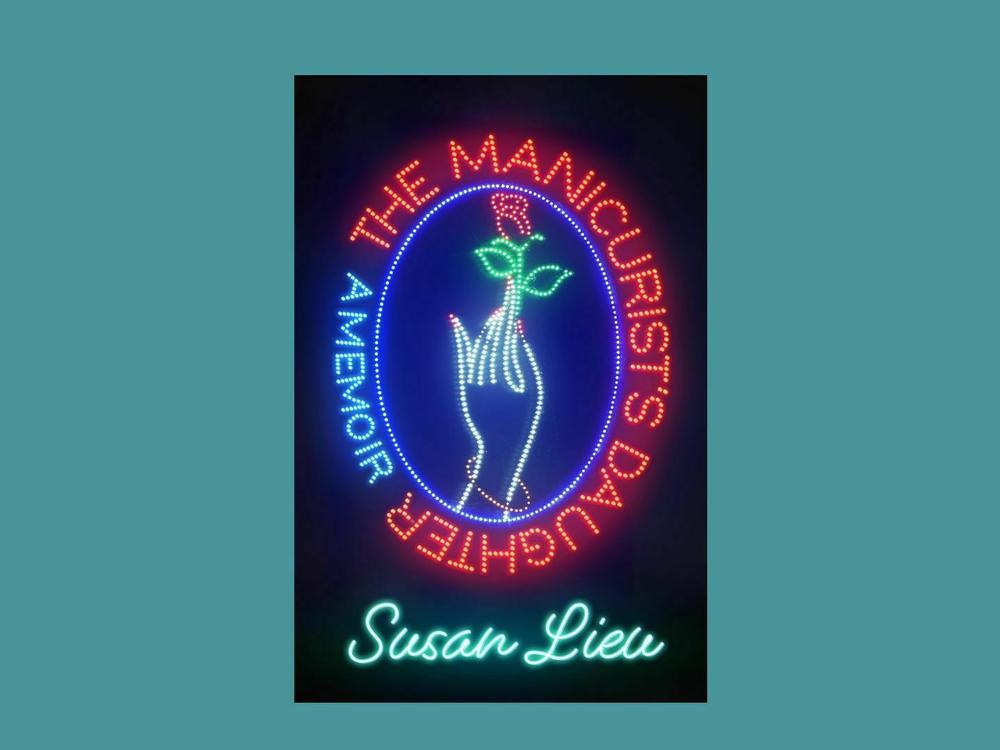Section Branding
Header Content
In 'The Manicurist's Daughter,' a refugee family goes on after its matriarch's death
Primary Content
In The Manicurist's Daughter, author Susan Lieu takes her acclaimed 2019 one-woman show — 140 LBS: How Beauty Killed My Mother — one step further, translating her performance's whirlwind-yet-self-contained approach into a well-paced, panoramic memoir.
In this iteration, Lieu's narrative — juxtaposing her Vietnamese American family's refugee trajectory with her mother's 1996 death at the hands of an uninsured plastic surgeon — delves deeper into her family's dynamics in the decades following her mother's death, to explore how this loss has been both a seismic rupture and an ongoing process toward communal reckoning.
Right at the onset, Lieu shows us how her unresolved grief over her mother's demise seems less an absence than an urgent, visceral haunting. While on an artist retreat, Lieu suffered sudden bouts of searing pain in her abdomen that landed her in the emergency room. This medical scare, experienced by the author at 37, recalled her mother's fatal ordeal at roughly the same age twenty years earlier. It also brought home to Lieu the vulnerability of the human body, especially in the context of cultural and physical displacement.
As if reenacting their refugee trauma, compounded by their mother's untimely death, whenever together, Lieu and her siblings would invariably discuss three things, namely, "how to make money, how to save money, and what [they are] going to eat next." Lieu's memoir poignantly captures her siblings' impacted grief, for which they have not pursued counseling, but instead have diverted toward more mundane, physical concerns.
Hà Thúy Phương, Lieu's mother, was a war survivor, fearless gambler, and resolute queen bee of an extended clan. She had used the winnings from her underground lottery operation to pay for her family's escape by boat from Communist Vietnam. After gaining U.S. asylum in 1983, Hà obtained a manicurist's license and eventually became the owner of two successful nail salons in Northern California, staffed with family members whom she sponsored from Vietnam. In rare moments of leisure, this charismatic matriarch would shepherd her 13-person household to casinos, sumptuous buffets at Sizzler, and one illegal clam-digging excursion that resulted in a late-night culinary feast. Despite her seemingly indomitable presence, Hà thought cosmetic surgery would improve her physical appearance, making her look more Western and assimilated. Her sudden death from a botched tummy tuck in 1996 set her loved ones adrift, turning them into refugees for the second time.
Lieu's initial obsession to avenge Hà's death by publicly shaming the unscrupulous doctor (he died of Parkinson's before she had the chance), becomes, over time, a way to redefine her mother's legacy within the evolving lives of surviving family members. Her quest reminds me of Franz Kafka's The Metamorphosis, in which Gregor Samsa, as his family's breadwinner, unquestioningly considers his daily labor as proof of love for his parents and sister. But without emotional appreciation from these family members, Samsa's selflessness is simply reduced to economic loss once he inexplicably turns into an insect. Kafka, an insurance lawyer by training, might have written The Metamorphosis as a parable of alienated labor — work simply becomes a sum of cash when divorced from love, the provider suddenly rendered inhuman, invisible.
By searching for ways to honor both her mother's economic and emotional impact after her passing, Lieu's memoir encompasses both social and familial dimensions. On the social front, she advocates increasing California's malpractice insurance beyond the $250,000 cap — an amount, unchanged from 1975, that she feels is paltry when compared to her mother's intrinsic worth to her family. (Lieu's family sued for damages and received the state's maximum malpractice payout from an insured nurse employed by the plastic surgery clinic, but not from the uninsured doctor, who was on probation at the time due to multiple pending lawsuits).
Out of shame or self-protection, most of Lieu's family members have opted to mourn Hà privately over the years. Even after nearly three decades, her father Tom and brother Hang are not willing to discuss Hà's malpractice death from elective surgery at family gatherings. As the youngest child — she was only 11 when her mother died — Lieu fears that the continued silence surrounding Hà's death would lead to collective amnesia, or a callous dismissal of both Hà's Vietnamese origins and her hard-won American legacy. After many volatile exchanges, and paranormal incidents where Lieu claims to have received Hà's blessing to publicly disseminate her story, the author also learns to be more accepting of those family member who are reluctant to reopen old wounds.
In any event, as if subconsciously inspired by Hà's memory, today Lieu and her siblings pursue entrepreneurial callings related to the body: Lieu is a performer, her sister Wendy a successful chocolatier, and her brother Kang a dentist. Her family story does not represent an irretrievable demise of the American Dream, but its radical, open-ended evolution.
Thúy Đinh is a freelance critic and literary translator. Her work can be found at thuydinhwrite.com. She tweets @ThuyTBDinh.

